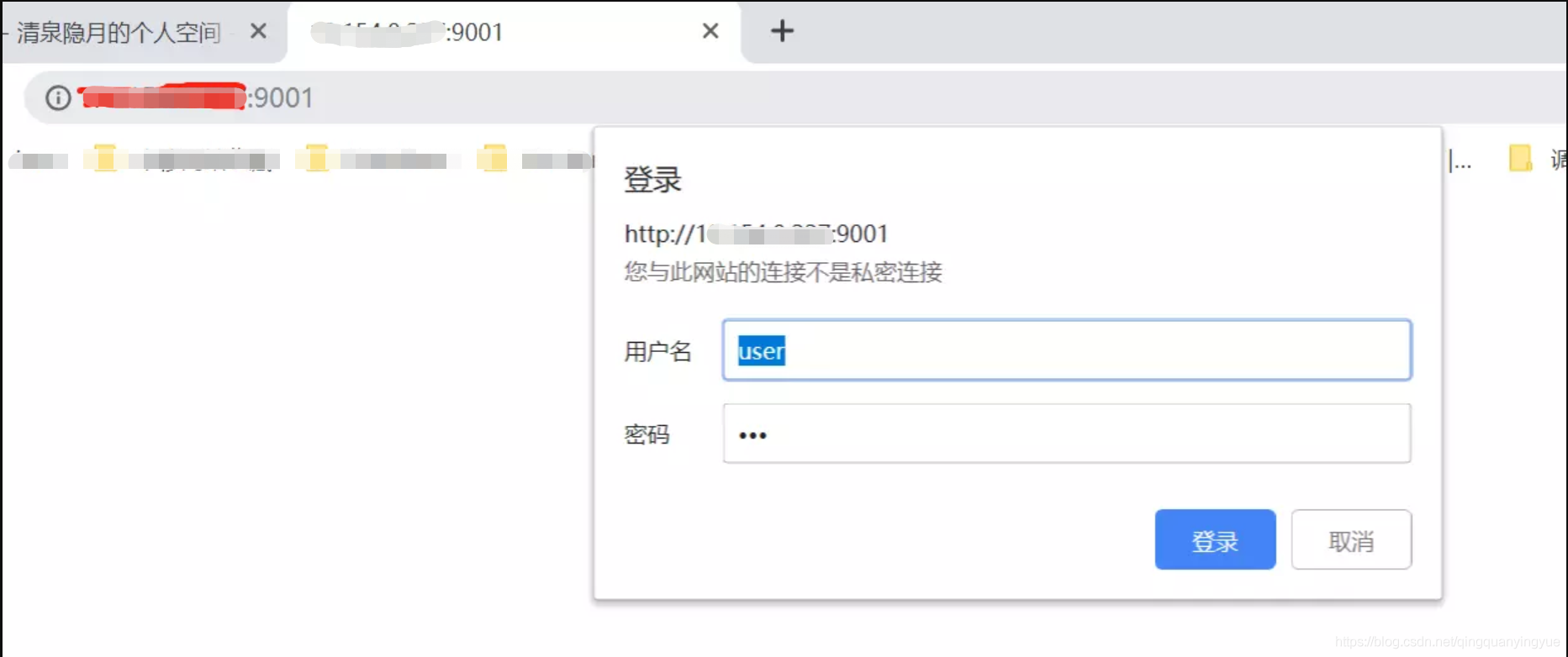前言
以前跑代码,为了不被杀掉经常用 nohup + &,后来发现,系统认为该死的程序都得死,这就很郁闷,市面上有很多进程守护的工具,只是写的语言不同而已(例如pm2,用node语言写的),supervisor用python写的,以前支持py2,现在py3也支持,所以不用担心版本问题。我这里把一些常规的使用介绍一下,顺便说一下有任何问题查阅官网:supervisor官网
一. 安装
安装方式多种多样,
- 离线安装:(公司内网不和外网连通)需要提前下好安装包,用make和make install 编译安装,稍微复杂点,这里不多说,有需要就自己研究一下。
- 在线安装:因为supervisor是python写的,所以可以直接 pip install supervisor 进行安装;或者 yum install supervisor 进行安装;首推pip方式。
二.配置
supervisor的所有启动设置都只在一个配置文件中进行,这个配置文件是唯一且最重要的。
- 生成配置文件:运行 echo_supervisord_conf 命令重定向到一个文件
echo_supervisord_conf > /home/flask_pro/supervisor_config/supervisord.conf
/home/flask_pro/ 这个目录是我自己建的一个flask项目的目录,
supervisor_config 是单独用来存放supervisor的配置和日志文件的目录,
如果不用重定向,会默认在 /etc/ 下面生成一个 supervisord.conf 配置文件
- supervisord.conf 文件说明:首先分号( ; ) 是注释符号,就是分号后面到本行结束都是注释,不起任何配置作用;配置文件中有很多设置项,着重介绍几个重要的。
[unix_http_server]
file=/tmp/supervisor.sock ; the path to the socket file
;chmod=0700 ; socket file mode (default 0700)
;chown=nobody:nogroup ; socket file uid:gid owner
;username=user ; default is no username (open server)
;password=123 ; default is no password (open server)
;[inet_http_server] ; inet (TCP) server disabled by default
;port=127.0.0.1:9001 ; ip_address:port specifier, *:port for all iface
;username=user ; default is no username (open server)
;password=123 ; default is no password (open server)
[supervisord]
logfile=/tmp/supervisord.log ; main log file; default $CWD/supervisord.log
logfile_maxbytes=50MB ; max main logfile bytes b4 rotation; default 50MB
logfile_backups=10 ; # of main logfile backups; 0 means none, default 10
loglevel=info ; log level; default info; others: debug,warn,trace
pidfile=/tmp/supervisord.pid ; supervisord pidfile; default supervisord.pid
nodaemon=false ; start in foreground if true; default false
minfds=1024 ; min. avail startup file descriptors; default 1024
minprocs=200 ; min. avail process descriptors;default 200
;umask=022 ; process file creation umask; default 022
;user=chrism ; default is current user, required if root
;identifier=supervisor ; supervisord identifier, default is 'supervisor'
;directory=/tmp ; default is not to cd during start
;nocleanup=true ; don't clean up tempfiles at start; default false
;childlogdir=/tmp ; 'AUTO' child log dir, default $TEMP
;environment=KEY="value" ; key value pairs to add to environment
;strip_ansi=false ; strip ansi escape codes in logs; def. false
; The rpcinterface:supervisor section must remain in the config file for
; RPC (supervisorctl/web interface) to work. Additional interfaces may be
; added by defining them in separate [rpcinterface:x] sections.
[rpcinterface:supervisor]
supervisor.rpcinterface_factory = supervisor.rpcinterface:make_main_rpcinterface
; The supervisorctl section configures how supervisorctl will connect to
; supervisord. configure it match the settings in either the unix_http_server
; or inet_http_server section.
[supervisorctl]
serverurl=unix:///tmp/supervisor.sock ; use a unix:// URL for a unix socket
;serverurl=http://127.0.0.1:9001 ; use an http:// url to specify an inet socket
;username=chris ; should be same as in [*_http_server] if set
;password=123 ; should be same as in [*_http_server] if set
;prompt=mysupervisor ; cmd line prompt (default "supervisor")
;history_file=~/.sc_history ; use readline history if available
; The sample program section below shows all possible program subsection values.
; Create one or more 'real' program: sections to be able to control them under
; supervisor.
;[program:theprogramname]
;command=/bin/cat ; the program (relative uses PATH, can take args)
;process_name=%(program_name)s ; process_name expr (default %(program_name)s)
;numprocs=1 ; number of processes copies to start (def 1)
;directory=/tmp ; directory to cwd to before exec (def no cwd)
;umask=022 ; umask for process (default None)
;priority=999 ; the relative start priority (default 999)
;autostart=true ; start at supervisord start (default: true)
;startsecs=1 ; # of secs prog must stay up to be running (def. 1)
;startretries=3 ; max # of serial start failures when starting (default 3)
;autorestart=unexpected ; when to restart if exited after running (def: unexpected)
;exitcodes=0,2 ; 'expected' exit codes used with autorestart (default 0,2)
;stopsignal=QUIT ; signal used to kill process (default TERM)
;stopwaitsecs=10 ; max num secs to wait b4 SIGKILL (default 10)
;stopasgroup=false ; send stop signal to the UNIX process group (default false)
;killasgroup=false ; SIGKILL the UNIX process group (def false)
;user=chrism ; setuid to this UNIX account to run the program
;redirect_stderr=true ; redirect proc stderr to stdout (default false)
;stdout_logfile=/a/path ; stdout log path, NONE for none; default AUTO
;stdout_logfile_maxbytes=1MB ; max # logfile bytes b4 rotation (default 50MB)
;stdout_logfile_backups=10 ; # of stdout logfile backups (0 means none, default 10)
;stdout_capture_maxbytes=1MB ; number of bytes in 'capturemode' (default 0)
;stdout_events_enabled=false ; emit events on stdout writes (default false)
;stderr_logfile=/a/path ; stderr log path, NONE for none; default AUTO
;stderr_logfile_maxbytes=1MB ; max # logfile bytes b4 rotation (default 50MB)
;stderr_logfile_backups=10 ; # of stderr logfile backups (0 means none, default 10)
;stderr_capture_maxbytes=1MB ; number of bytes in 'capturemode' (default 0)
;stderr_events_enabled=false ; emit events on stderr writes (default false)
;environment=A="1",B="2" ; process environment additions (def no adds)
;serverurl=AUTO ; override serverurl computation (childutils)
;[include]
;files = relative/directory/*.ini
重点介绍几个项目配置
- 通信方式选择
[unix_http_server]
file=/tmp/supervisor.sock ; the path to the socket file
;chmod=0700 ; socket file mode (default 0700)
;chown=nobody:nogroup ; socket file uid:gid owner
;username=user ; default is no username (open server)
;password=123 ; default is no password (open server)
;[inet_http_server] ; inet (TCP) server disabled by default
;port=127.0.0.1:9001 ; ip_address:port specifier, *:port for all iface
;username=user ; default is no username (open server)
;password=123 ; default is no password (open server)
上面这两个是提供两种通信方式,sockt和TCP,[unix_http_server] 是socket,[inet_http_server] 是TCP;
socket方式安全,TCP方式可以有一个外部访问的界面,
这里说一下,选择socket需要配置file项,指定socket存放的路径,用默认值也是没问题的
我选择TCP,主要是想要一个界面,配置结果如下:
;[unix_http_server]
;file=/tmp/supervisor.sock
;chmod=0700
;chown=nobody:nogroup
;username=user
;password=123
[inet_http_server]
port=0.0.0.0:9001 ;默认配置只能本地访问,配置成0.0.0.0可以通过外部查看监控界面
username=user
password=123
- [supervisord] 服务配置,这个没啥改的,除了 logfile 和 pidfile 我改了路径,其他都默认,这就是一个写日志和记录进程的东西,么啥要深究的
logfile=/home/flask_pro/supervisor_config/configfiles/supervisord.log
pidfile=/home/flask_pro/supervisor_config/configfiles/supervisord.pid
- [rpcinterface:supervisor] 这个项目不用管,默认
- [supervisorctl] 服务很重要,启动、重启、关闭、查询都需要这个服务
[supervisorctl]
;serverurl=unix:///tmp/supervisor.sock ;这个是选择socket通信方式的,之前我们选的是TCP,所以注释掉
serverurl=http://0.0.0.0:9001 ;根据上面选择TCP通信的设置对应改一下
username=user ;和上面TCP通信方式一致
password=123 ;和上面TCP通信方式一致et
其他配置都默认,其实其他配置也没啥用
- [program:theprogramname] 进程设置,我直接给一个我写的栗子,这样比较清晰
[program:circle_test] ;进程名:circle_test
command = /root/anaconda2/bin/python -u circle_test.py ;运行的命令
directory = /home/flask_pro/pro/ ;运行命令所在的文件夹
stdout_logfile = /home/flask_pro/pro/circle_test.log ;日志打印文件位置
autostart = true ;是否设置启动后自动启进程
startsecs = 5 ;设置启动后几秒开始启进程
autorestart = true ;是否自动重启
startretries = 3 ;重启三次以后不再重启,说白了就是三次最多了,以后不干了
stdout_logfile_maxbytes = 100MB ;日志最大容量,超过就重新开一个标号结尾的日志文件
- [include] 包含关系配置
;[include]
;files = relative/directory/*.ini
其实可以这么理解,我们这个supervisord.conf是不是还要包含其他文件的守护进程,可以把文件的守护进程一起加进来
例如:
[include]
files = /etc/supervisor.conf
三.使用
配置已好,在这里展示上一步骤5的circle_test.py文件
#!/usr/bin/python
# -*- coding: utf-8 -*-
import time
if __name__ == '__main__':
count = 0
while True:
print count, 'sleep 1s'
count = count + 1
time.sleep(1)
supervisor启动选项
supervisord -c /home/flask_pro/supervisor_config/supervisord.conf
如果没有任何错误打印就证明启动成功
我们也可以看一下 circle_test.log
[root@cmsoft pro]# tail -f circle_test.log
19982 sleep 1s
19983 sleep 1s
19984 sleep 1s
19985 sleep 1s
19986 sleep 1s
19987 sleep 1s
进程是没问题的
也可以通过命令
supervisorctl -c /home/flask_pro/supervisor_config/supervisord.conf status
查看:
circle_test RUNNING pid 13335, uptime 5:45:21
进程已经启动保持 5h45min21s了
-c /home/flask_pro/supervisor_config/supervisord.conf 是指定配置文件参数
然后我们通过界面看一下进程的监控:浏览器输入 linux的ip:9001
进入以后可以看到:
可以通过界面操作停止、重启等进程操作
四.关键命令
supervisorctl stop program_name 停止某个进程
supervisorctl start program_name 启动某个进程
supervisorctl restart program_name 重启某个进程
all 参数表示全部,eg:
supervisorctl stop all 停止全部进程
supervisorctl reload 载入最新的配置文件,停止原有进程并按新的配置启动
supervisorctl update 根据最新的配置文件,启动新配置或有改动的进程
上面的命令其实都需要加一个配置文件的选项,参见步骤(3.使用),
如果不配置参数会默认使用 /etc/supervisord.conf 配置文件
五.结语
上面只是简单说了一下常见配置项,如果需要深入研究一定要看最新的文档。
来源:CSDN
作者:清泉影月
链接:https://blog.csdn.net/qingquanyingyue/article/details/104155897